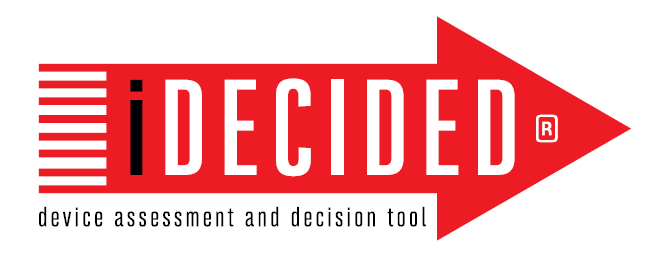Managing vascular access devices for patients in source isolation
Now more than ever, many of us are caring for sick patients requiring source isolation for infectious (e.g. SARS-CoV2 [COVID-19]) or multi-resistant organisms (MRSA, VRE, etc). The last thing any patient needs is a bloodstream infection. For patients with an existing infection, a bloodstream infection can be particularly deadly.
So, how do you make sure your vascular access devices (VAD) are functioning properly when you can't be in the patient's room at all times?
Here are a few quick tips, using the I-DECIDED device assessment and decision tool1,2, to help you manage these important devices and prevent complications:

I = Identify any devices present
- Ask the patient, if possible.
- Check the patient's medical record.
- Perform a visual inspection of the patient to ensure no device remains unchecked.
D = Does the patient need the device?
- Reassess the need for every device, every day.
- Remove lines when no longer in use or if any complications occur.
E = Effective function
- Flush lines using 0.9% normal saline in a 10 ml syringe.
- Use a push-pause technique to facilitate rinsing of the catheter.
C = Complication-free
- Assess the VAD for complications (pain, redness, swelling, blockage, dislodgement, etc.) at least every shift, and remove the device if complications occur.
- Ensure IV administration bags contain enough fluids to avoid lines running dry.
- Prepare replacement intravenous infusions ahead of time, whenever possible.
- Set the IV pump alarm volume higher than normal, if possible.
I = Infection prevention
- Always wash your hands before and after touching any invasive devices and lines.
- Apply personal protective equipment as required by the type of isolation (droplet, airborne, contact).
- Use aseptic technique when inserting any VAD.
- Use maximal barrier precautions for inserting central venous access devices.
- Prepare the insertion site with appropriate disinfectant (e.g. chlorhexidine 2% with 70% alcohol) and allow to dry prior to insertion.
- Ensure all equipment (e.g. ultrasound) is thoroughly cleaned after each patient use.
- Decontaminate access hubs (70% alcohol or chlorhexidine wipes) with a scrubbing motion and allow to dry before accessing needleless connectors.
D = Dressing and Securement
- Use a sterile transparent polyurethane dressing (or sterile gauze and tape if the site is oozing).
- Transparent polyurethane dressings enable visualization of the VAD insertion site.
- Chlorhexidine dressings are recommended for CVADs.
- Change the VAD dressing it if it becomes moist, soiled or loose.
- Change transparent dressings every 7 days or earlier if contaminated.
- Change sterile gauze and tape dressings every 2 days or earlier if contaminated.
- Use extra securement to reduce the likelihood of VAD dislodgement (e.g. Integrated securement dressing, sutureless securement device, tissue adhesive, extra tape).
- Secure the administration set, also.
- Some units are positioning the IV pumps outside the patient's room. If you need to do this, make sure the administration set is long enough so it doesn't tug the lines.
E = Evaluate and Educate
- If possible and appropriate, evaluate the patient's understanding of their VAD and educate the patient as needed.
- Remind the patient to use the call bell to notify the nurse if they have any concerns about the VAD.
D = Document your Decision
- Based on your assessment, decide whether to continue, troubleshoot or remove the device.
- Document insertion, assessment, removal and complications in the patient's medical record.
- Ensure all medications, fluids, administration sets and dressings are dated, and document all changes as soon as possible.
We hope this is useful. Comments and questions are always welcome!
References
1. Ray-Barruel G, Cooke M, Chopra V, Mitchell M, Rickard CM. Measurement properties of a peripheral intravenous catheter assessment and decision tool. BMJ Open. 2020; 10:e035239-e035239. http://dx.doi.org/10.1136/bmjopen-2019-035239
2. Ray-Barruel G, Cooke M, Mitchell M, Chopra V, Rickard CM. Implementing a clinical decision-making tool for device assessment and safe removal in hospitals (I-DECIDED study). Protocol for an interrupted time-series study. BMJ Open, 2018;8. http://dx.doi.org/10.1136/bmjopen-2017-021290
) Author:Gillian Ray-Barruel
Author:Gillian Ray-Barruel| Tags:assessmentdressingsflushinginfection preventionintravenous catheterIV managementpatient experiencesecurementvascular access devices |








